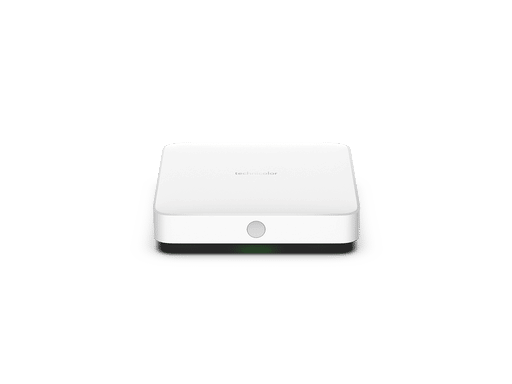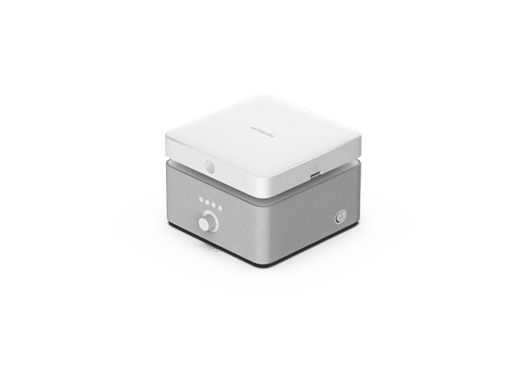
Jade: the future of the set-top box
Vantiva Jade is a set-top box (STB) that’s open, powerful, and able to deliver the seamless experiences that viewers and internet users crave. Consumers are demanding more from customer-premises equipment (CPE) – Jade was built to meet the huge rise in popularity of 4K Ultra HD streaming, online gaming, and smart home devices. People want high-quality video delivered instantly, easy access to over-the-top (OTT) apps like Netflix, and the ability to connect all their devices throughout their smart home – Jade makes it happen, helping Network Service Providers (NSPs) boost both satisfaction and revenue.

Vantiva Re-inventing the set-top box
The Jade set-top box is a 4K Ultra HD device containing next-generation 16nm silicon and featuring the latest technology standards – such as Wi-Fi 6, AV1 decoding, and far-field voice – in a compact package. Jade is available for both Android TV and RDK-V Lab Accelerator, and benefits from a lightning-fast quad-core processor, Bluetooth 5 technology, and an innovative stackable module enabling flexibility when introducing services like voice assistants.
Jade’s major innovation resides in Wi-Fi 6 capabilities and Technicolor’s innovative antenna design. Technicolor Jade’s ingenious, well-designed 2×2 Wi-Fi 6 system antenna can achieve zero packet loss when paired with a 4×4 Wi-Fi 5 gateway. It can achieve a similar level of performance as a typical 4×4 Wi-Fi 6 client, but at significantly lower cost. The Wi-Fi 6 technology that Technicolor has built into the STB gives Jade a 30 percent increase in coverage capacity for IPTV and streaming video compared to Wi-Fi 5.
The Jade set-top box is equipped with the EasyMesh™ standard, it acts as a wireless access point that can work together with the main home gateway to form a unified network, enabling smart, efficient Wi-Fi and a smooth wireless experience throughout the home. It’s an essential asset for operators who want to provide wireless whole-home coverage to their customers.
Jade comes with innovative stackable modules enabling flexibility in the introduction of value-added services such as the Google home assistant with far-field voice control – a feature critical today as it enables operators to deliver the most engaging user experience by providing hands-free search and content discovery as well as enriched Smart Home functionality.
Related Case Studies

Improving Security for CPE Devices
Protect home gateways, set-top box (STB) platforms, and end-users data with Vantiva’s advanced customer-premises equipment (CPE) security.
see more
Voice assistants: A New Field of User Interaction
Unlock the full potential of far-field voice technology and voice assistants for customers.
see more
























